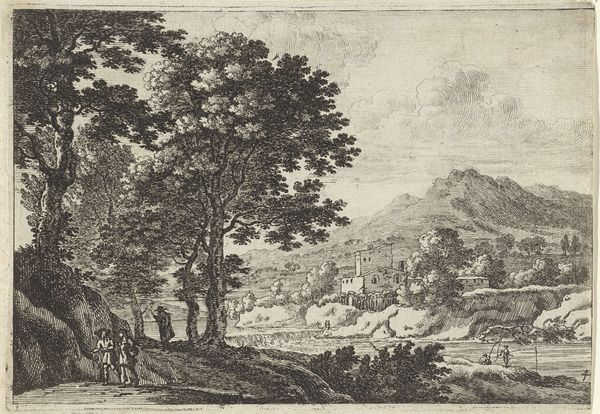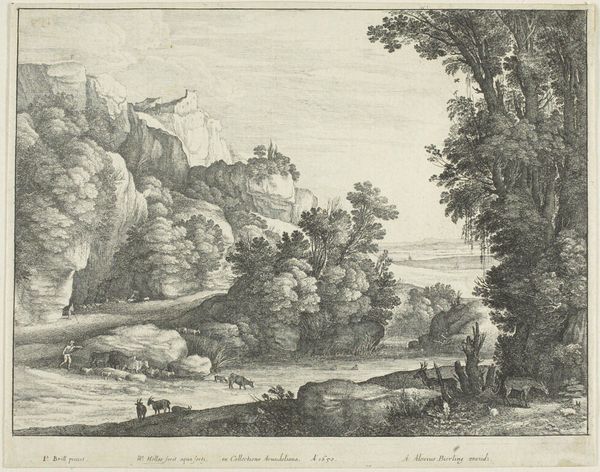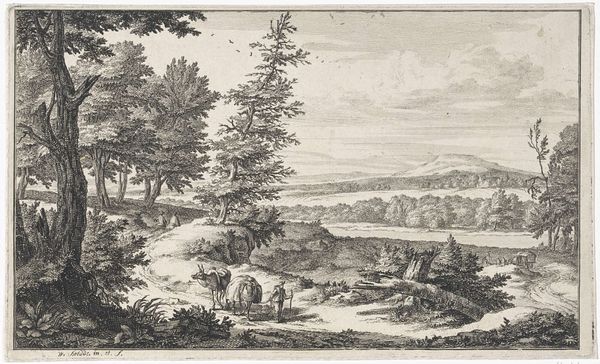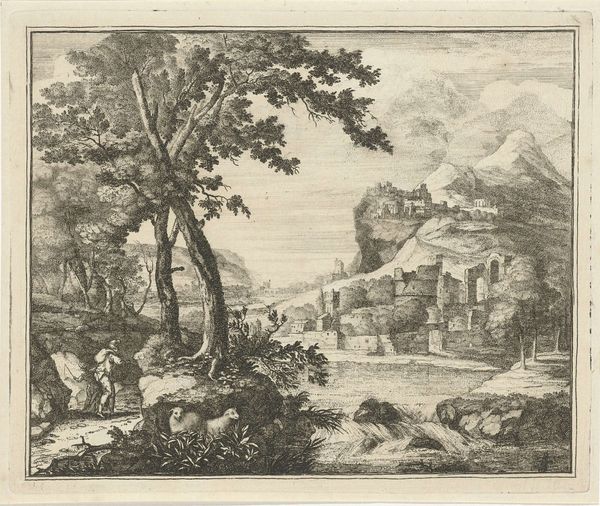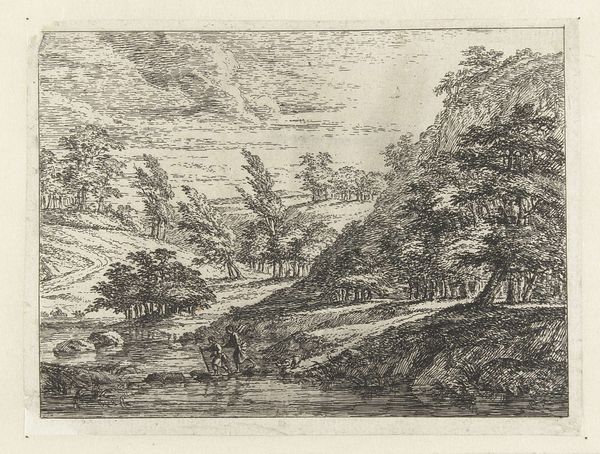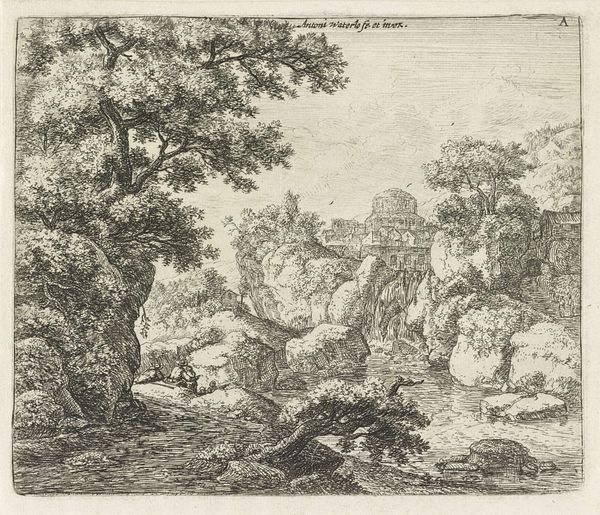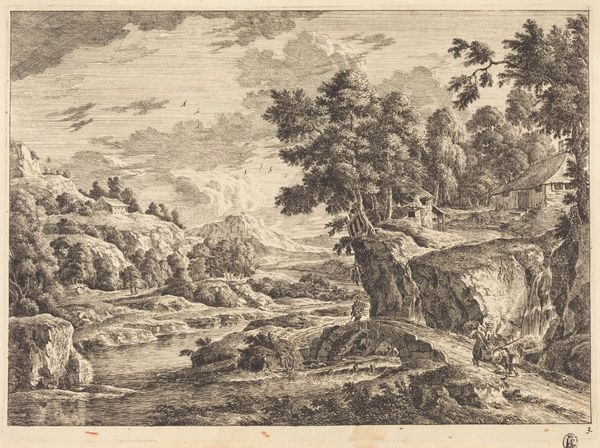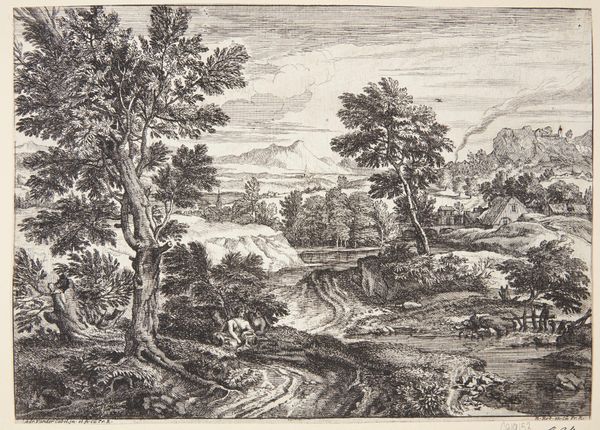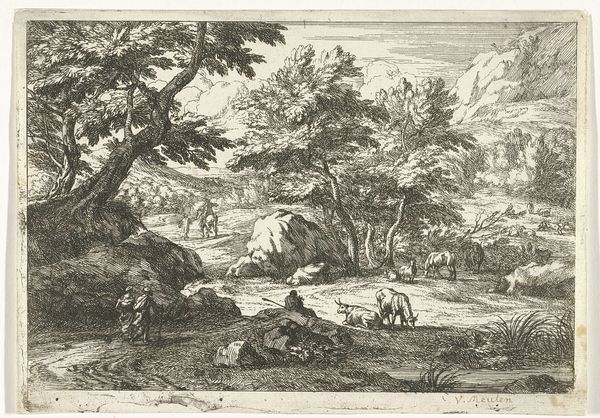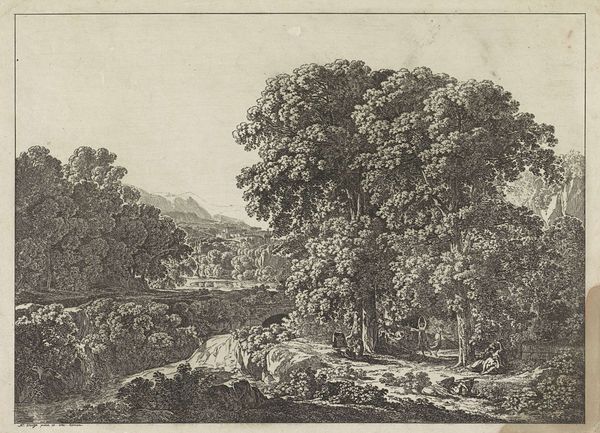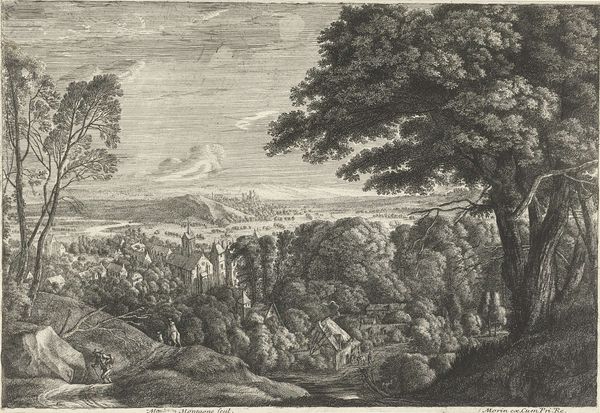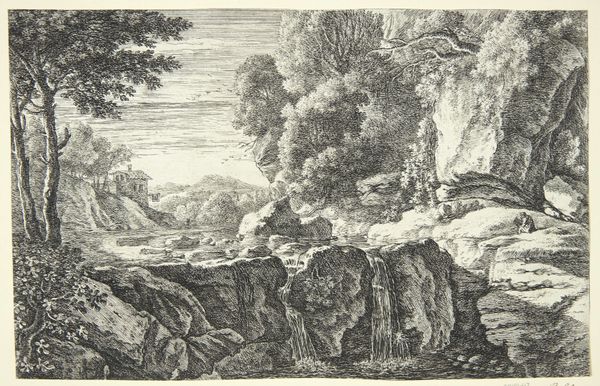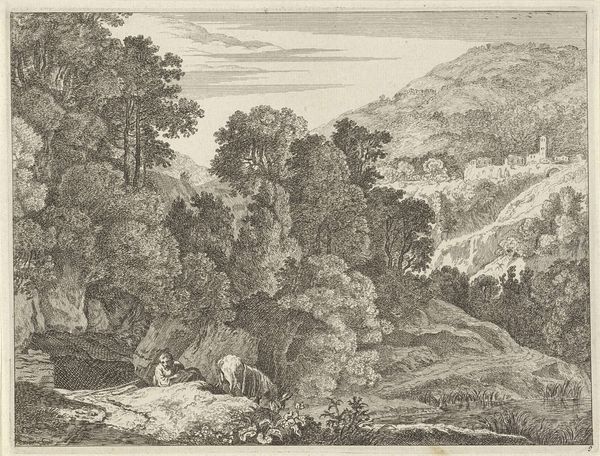
print, etching
#
dutch-golden-age
# print
#
etching
#
landscape
#
genre-painting
Dimensions: height 118 mm, width 173 mm
Copyright: Rijks Museum: Open Domain
Curator: What strikes you first about this etching, titled "Ezeldrijver op een pad", or "Donkey Rider on a Path," which dates from around 1623-1705, here at the Rijksmuseum? Editor: It feels quiet, almost melancholic. The contrast between the detailed foreground and the hazy distance really creates a sense of journey and perhaps a hint of isolation for the figure. Curator: It’s fascinating how Anonymous, the maker of this piece, used the etching technique to render the details, especially within the trees and landscape features. Look closely at the lines. They show labor! The hand and its manipulation of tools to manufacture this print, ready to be purchased by, and distributed amongst, a growing middle class. The labor is implicit here. Editor: Precisely. The very fact that this is a print speaks volumes about access and distribution of art during the Dutch Golden Age. It also implicitly represents the socio-political realities that are made apparent through land use. We are drawn into a narrative that acknowledges its relationship to larger issues. Who has access to these "picturesque" pathways? Who doesn't? What about the very "stuff" this image is produced with? Curator: Good point, the paper itself is also crucial. The cost of the materials surely dictated its consumption. A lucrative printing trade had risen at this time, with networks distributing images across vast regions. Here’s a landscape available for purchase and placement into the private sphere! Editor: Exactly. Consider the composition as more than just aesthetics; it's actively framing a world view. Even the seemingly pastoral scenes are intertwined with the emerging merchantile society and attendant societal constraints. We need to acknowledge the limitations that accompanied a burgeoning capitalist world. Curator: Ultimately, this print serves as an exceptional case study. Through an examination of its physical components and production processes, it's evident just how significantly societal forces and class shaped our relationship with these "simple" landscapes. Editor: Yes, this piece acts as a wonderful gateway. It lets us probe into a seemingly serene setting, where complex human relationships, and very human contradictions, begin to bubble to the surface.
Comments
No comments
Be the first to comment and join the conversation on the ultimate creative platform.
